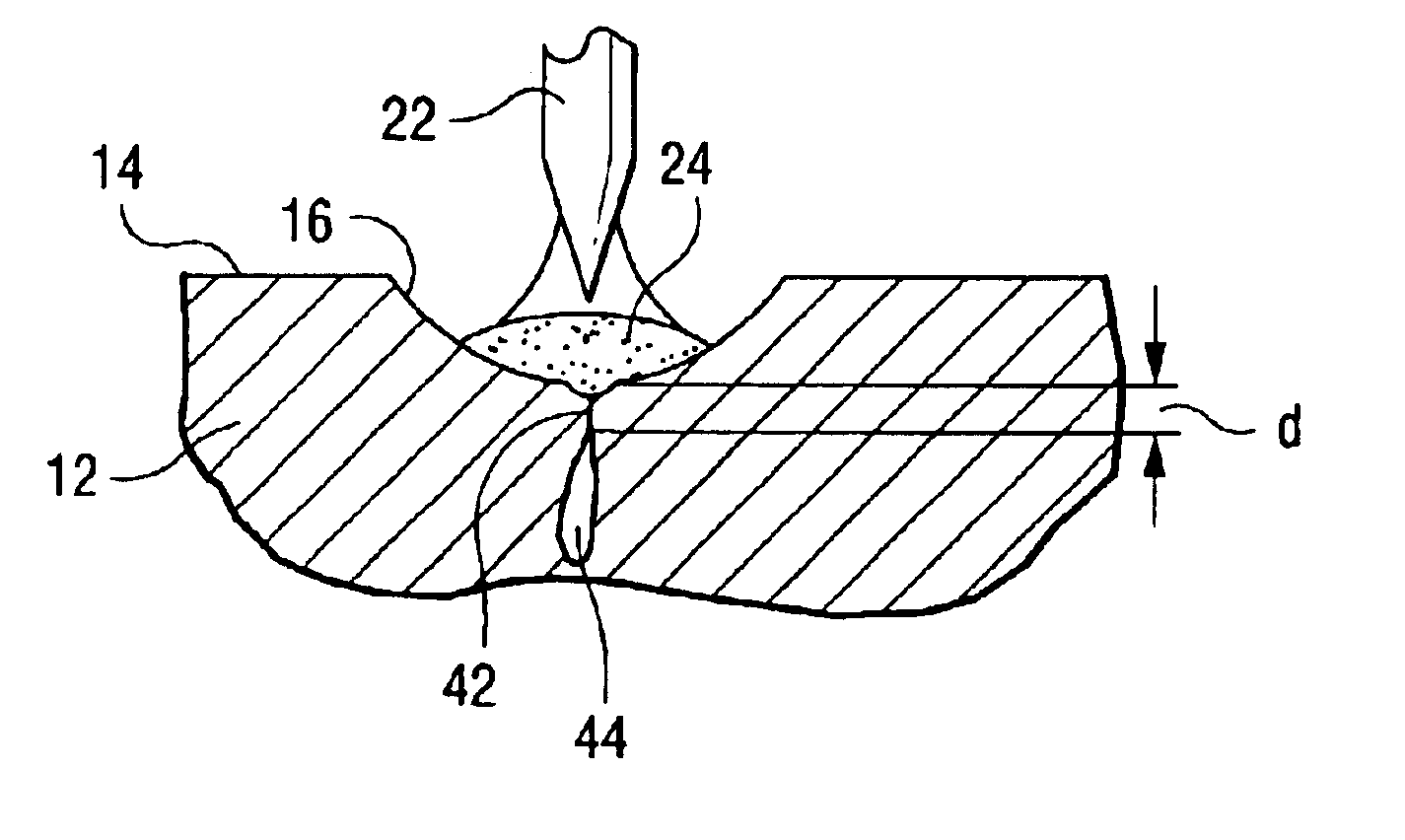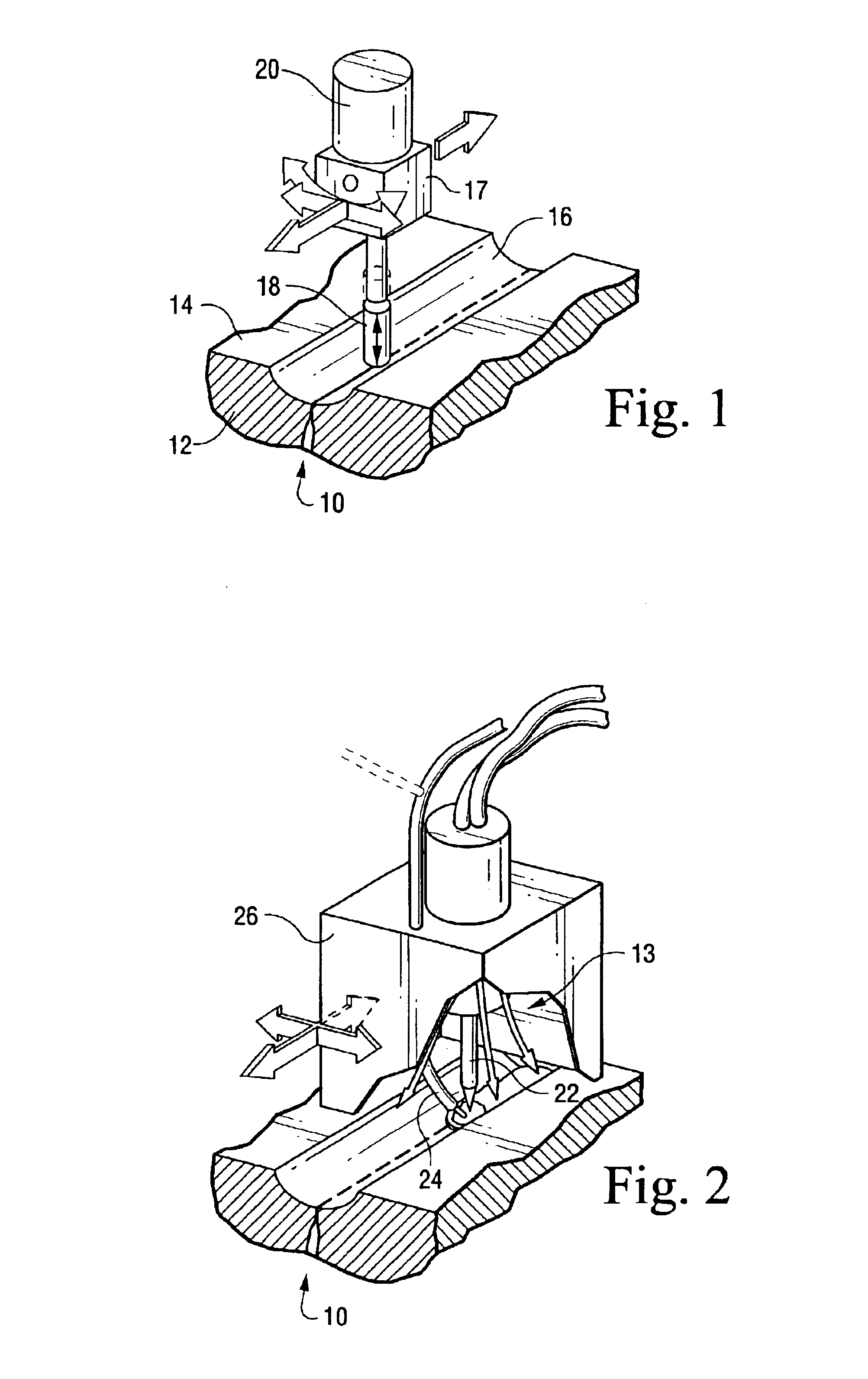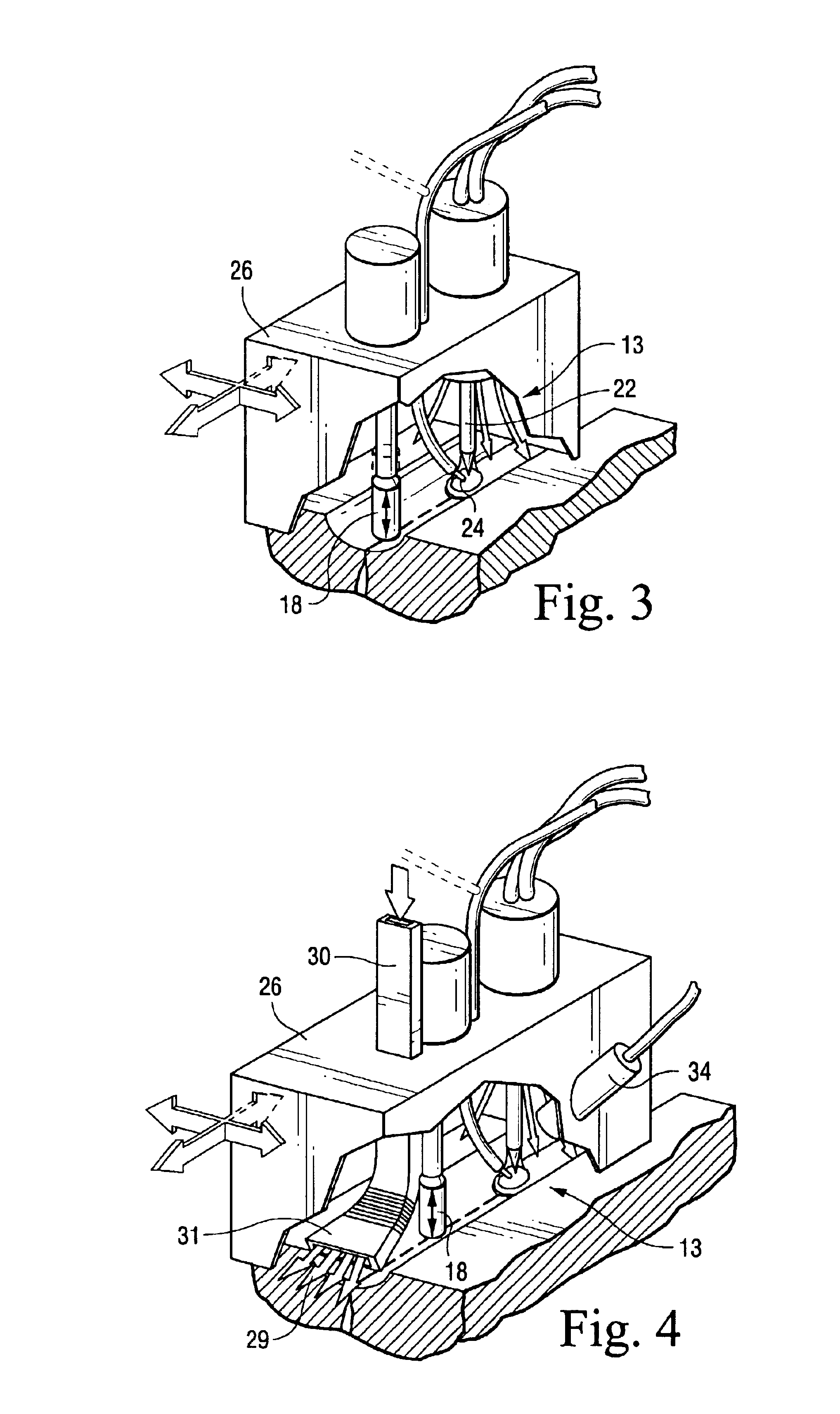Fusion-welding of defective components to preclude expulsion of contaminants through the weld
a technology of defective components and fusion welding, which is applied in the direction of solventing equipment, manufacturing tools, other domestic objects, etc., can solve the problems of subsequent crack closure and sealing, further disturbance of the weld pool, etc., and achieves increased weld penetration and heat input. high, the effect of increasing the heat inpu
- Summary
- Abstract
- Description
- Claims
- Application Information
AI Technical Summary
Benefits of technology
Problems solved by technology
Method used
Image
Examples
Embodiment Construction
[0023]Referring now to the drawings, particularly to FIG. 1, there is illustrated a tool for plastically deforming one or both margins or sides of a crack to close the crack to form a sealed ligament while retaining an unclosed portion of the crack underlying the sealed ligament. Particularly, the crack, generally designated 10, is formed in a component 12 and is typically exposed through the surface 14 of the component 12. The crack typically extends from the surface 14 and inwardly of the component. In FIG. 1, the surface 14 has been excavated to form a recess or trough 16, although it will be appreciated that the present apparatus and methods may be applied without first excavating the surface 14. Also illustrated in FIG. 1 is a peening tool 17 having a deformation or peening head 18 driven by a transducer 20. The tool is movable linearly in orthogonally-related directions and along a curvilinear path as indicated by the arcuate arrow. The tool head 18 vibrates along its axis, as...
PUM
| Property | Measurement | Unit |
|---|---|---|
| Depth | aaaaa | aaaaa |
| Heat | aaaaa | aaaaa |
| Velocity | aaaaa | aaaaa |
Abstract
Description
Claims
Application Information
 Login to View More
Login to View More - R&D
- Intellectual Property
- Life Sciences
- Materials
- Tech Scout
- Unparalleled Data Quality
- Higher Quality Content
- 60% Fewer Hallucinations
Browse by: Latest US Patents, China's latest patents, Technical Efficacy Thesaurus, Application Domain, Technology Topic, Popular Technical Reports.
© 2025 PatSnap. All rights reserved.Legal|Privacy policy|Modern Slavery Act Transparency Statement|Sitemap|About US| Contact US: help@patsnap.com



